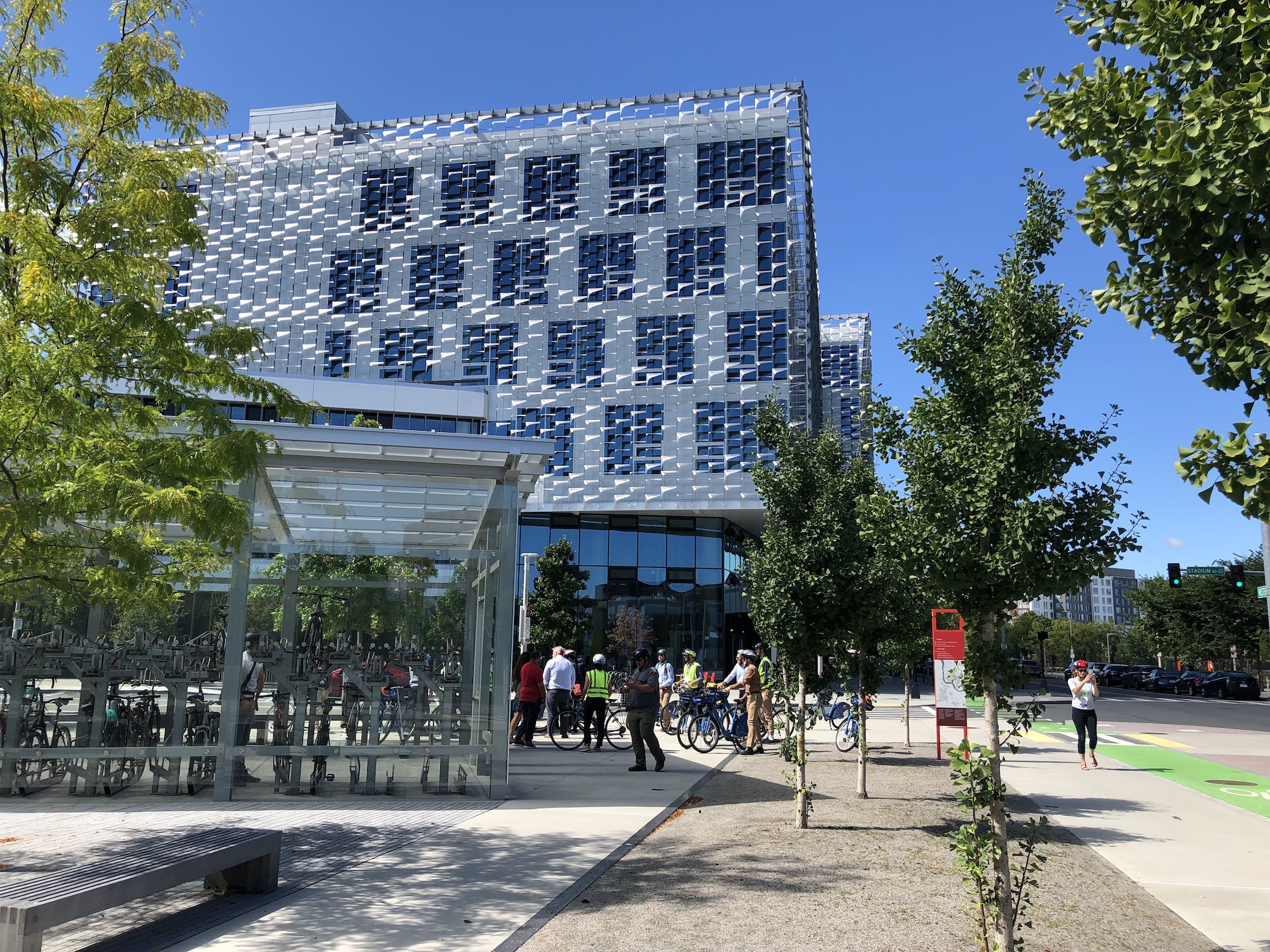At last month's NACTO conference in Boston, City of Boston planners had a chance to showcase the city's recently-updated bicycle parking guidelines with a tour of some of the bike storage rooms that have been incorporated into new developments in the Allston neighborhood.
The city adopted its newest Bike Parking Guidelines in January 2021. The document governs requirements for bike parking at all large new developments in the City of Boston through the city's "Article 80" development review process (the same process through which the city also establishes limits on the amount of car parking that's allowed to be built in these projects).
In general, the guidelines require one indoor, ground-level bike parking space for every apartment unit or for every 2,500 square feet of office, lab, or classroom space (the City of Cambridge has had similar rules in place since 2013).
"Bike parking should be as convenient – or more convenient – than car parking," stress Boston's guidelines.
Joe Blankenship, a planner with the Boston Planning and Development Agency (BPDA), said that the updated guidelines aim to help new developments meet the targets contained in the Go Boston 2030 transportation plan, adopted in 2017, which set a goal of cutting car traffic in half by 2030, and making up the difference in increased transit use, bike riding, and walking trips.
Two recently-completed projects on Guest Street in Allston – part of the Boston Landing development – illustrate some of the results of the new rules.
At the Lantera apartment building, completed in 2018 at 125 Guest Street, a dedicated bike parking room capable of storing nearly 100 bikes is accessible directly from the sidewalk on a side street. The room includes a repair stand, with a bike pump and basic tools, and a second interior door leads to the building's lobby:
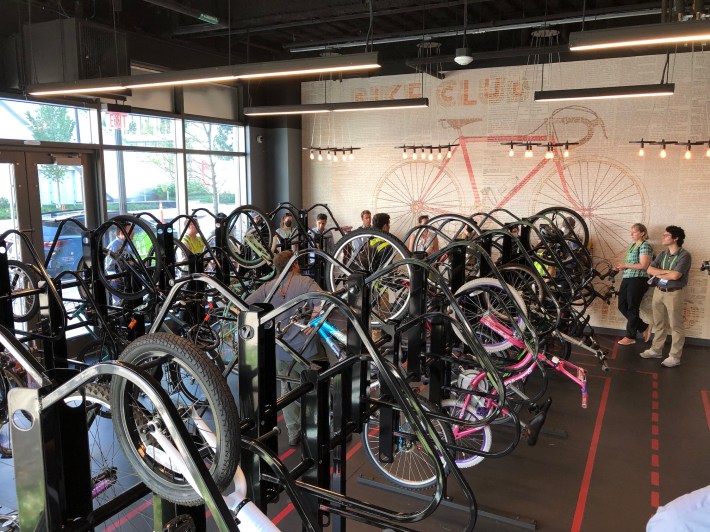
Notably, this bike storage room was built under older BPDA guidelines; based on feedback from users, the "version 2.1" guidelines issued in 2021 now include requirements for more floor-mounted racks, which are more user-friendly for older adults and people with disabilities, plus minimum requirements for extra-wide bike parking spaces that can accommodate larger cargo bikes, bike trailers, and baby seats.
Across the street from the Lantera apartments is the New Balance headquarters office, where the bike parking area features washrooms and lockers to let users change into work clothes after their bike commute.
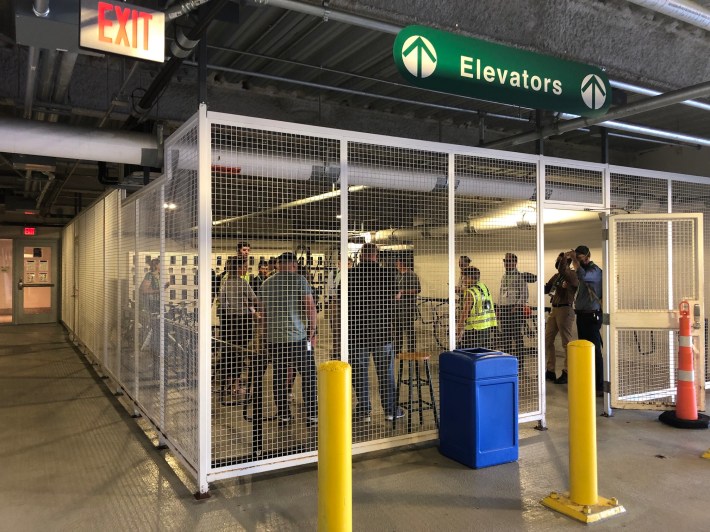
The NACTO group tour ended with a visit to Harvard's new Science and Engineering complex on Western Avenue in Allston. There, adjacent to a new sidewalk-level protected bike lane that connects the Allston campus to the Charles River bike paths, the university has installed two glassy bike storage sheds that can store hundreds of bicycles for university students and employees:
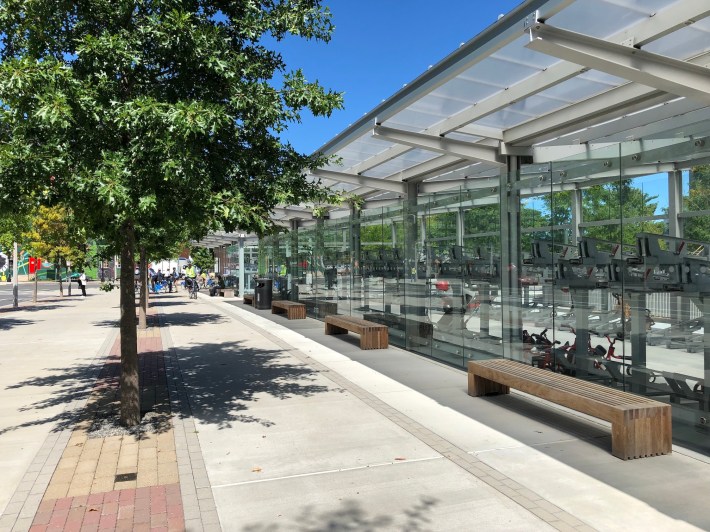
These buildings are large enough to store hundreds of bikes, and even on a beautiful September day, they still had plenty of capacity. And they don't just store bikes: the far end of one of the buildings abuts a campus child care center, and provides a convenient place for parents to stow their strollers during the day:
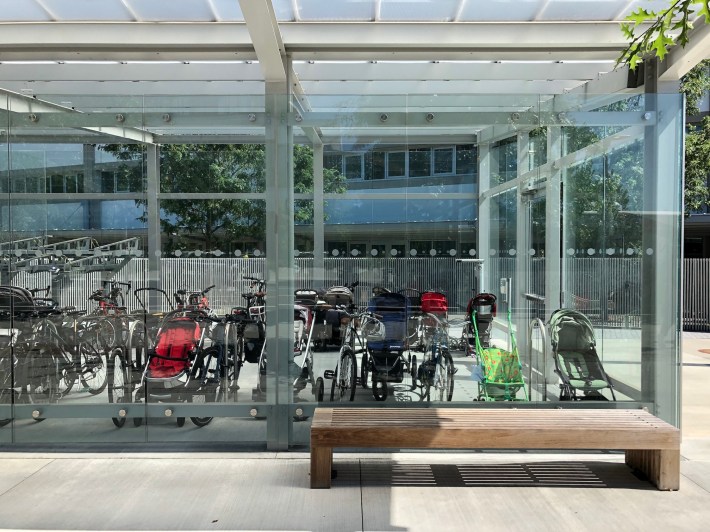
The new campus also includes abundant outdoor bike parking near the main entrances of campus buildings:
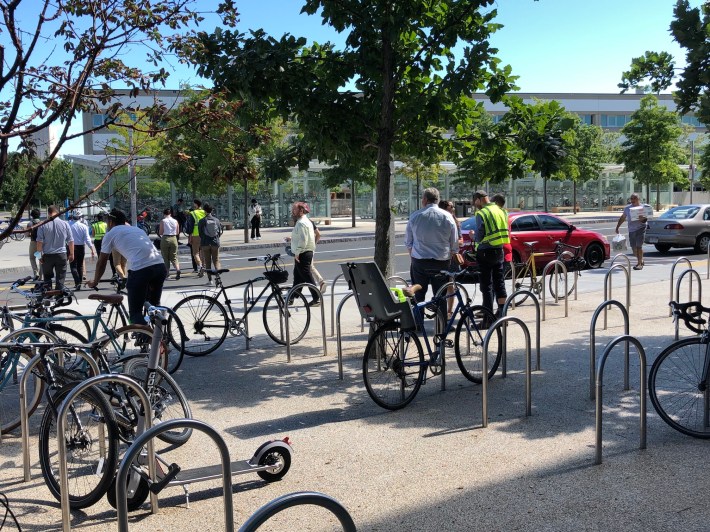
In addition to requiring conveniently located indoor bike parking rooms for residents and employees, Boston's rules also specify minimum requirements for the installation of outdoor bike racks in public spaces for visitors to use.
Jen Rowe, an Active Transportation Planner with the City of Boston who was involved in writing the city's updated guidelines, says that visitor bike racks are required to be "really visible from the public right-of-way, and conveniently located near the building entrance, and really well-lit. If people can't see them, they're not going to get used."
Larger developments are also required to reserve space and make financial contributions for new Bluebikes stations.
The city's new bike parking regulations still have a major limitation: in a typical year, fewer than 100 new buildings go under construction under the BPDA's Article 80 requirements; and many of these developments are built in relatively wealthy neighborhoods, like Fenway and the Seaport.
The vast majority of Bostonians still live and work in approximately 86,000 older buildings throughout the city that predate any of these rules.
Earlier this year, the Boston Cyclists Union published a research report on bike parking in Boston that found "there are significant disparities in bike parking availability in Boston based on income and race," and that Boston has considerably fewer public bike racks per capital than a number of other peer cities across the country.
In order to ensure that the whole city – not just areas with lots of new development – can meet the city's goals to increase bicycle transportation, the Boston Cyclists Union recommended that the city dedicate $300,000 in its annual budget to install more bike parking citywide, with a particular focus on installing bike racks in lower-income neighborhoods and in neighborhoods where more people of color live.
